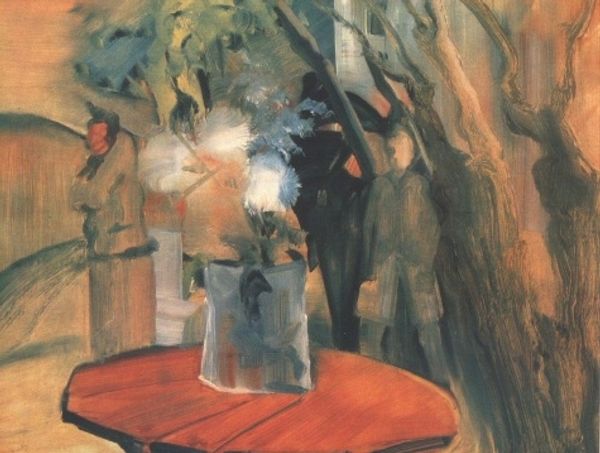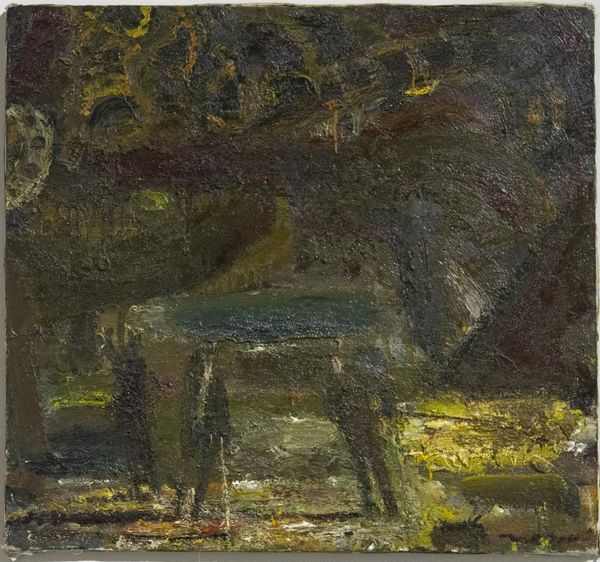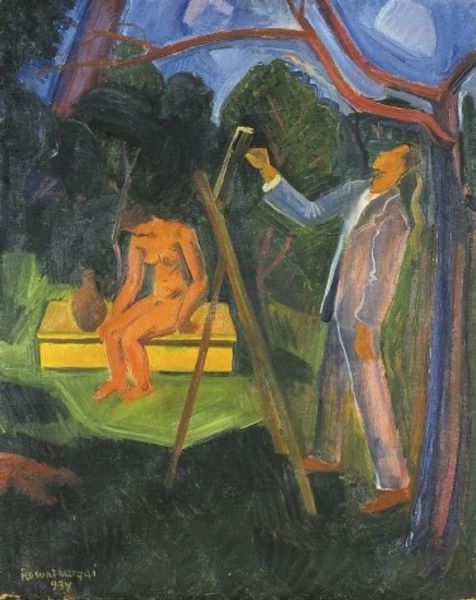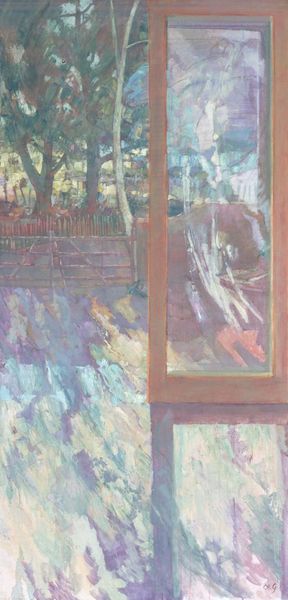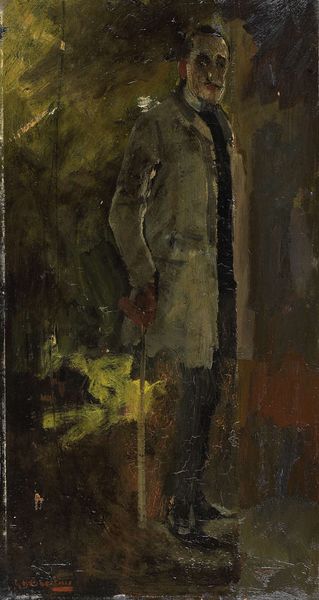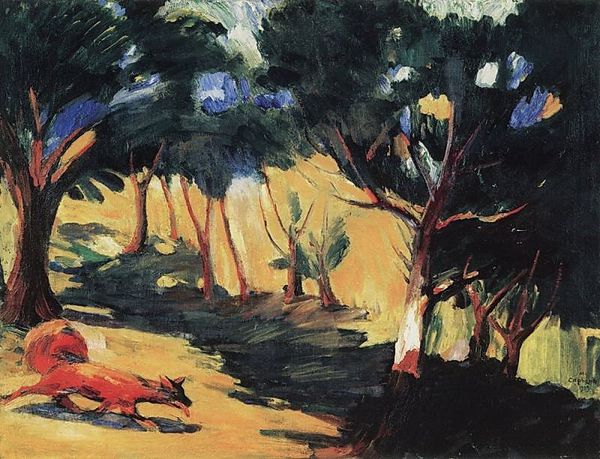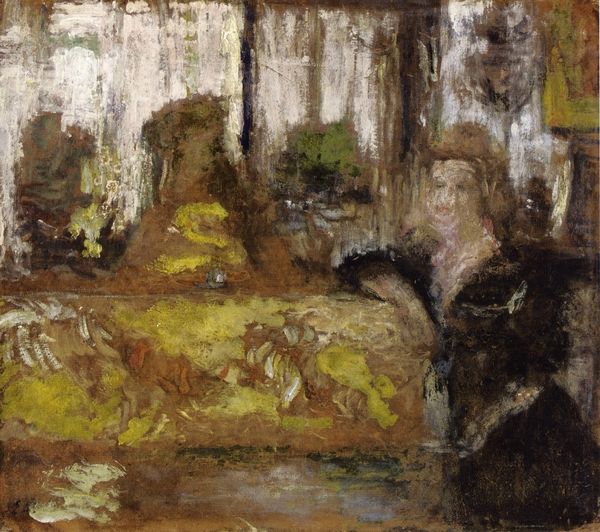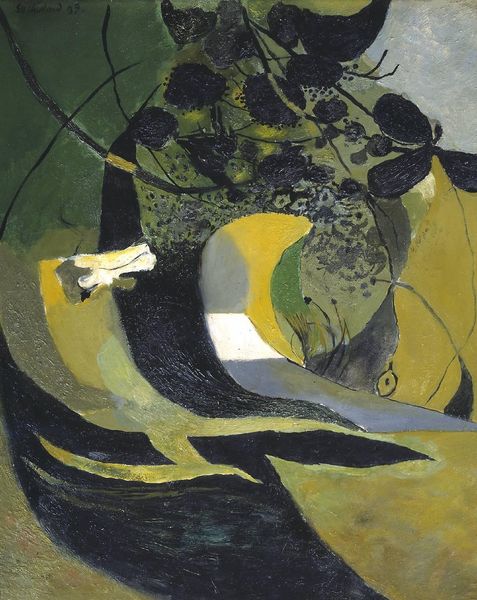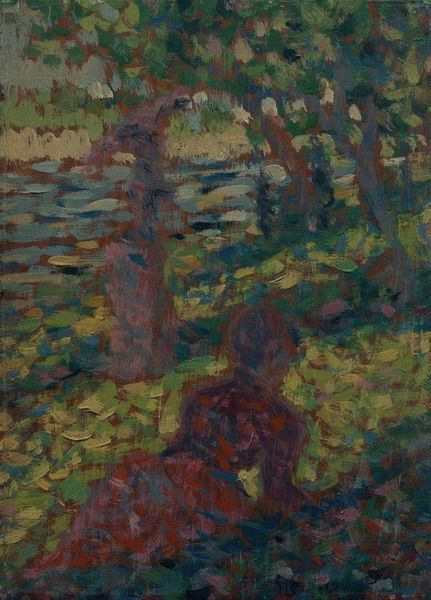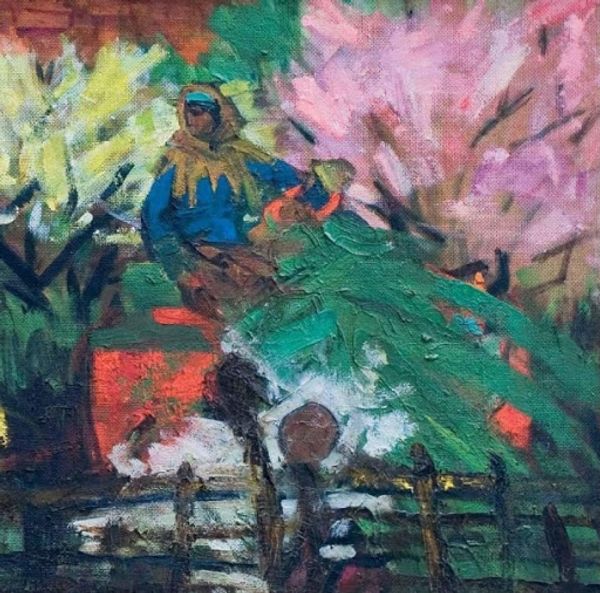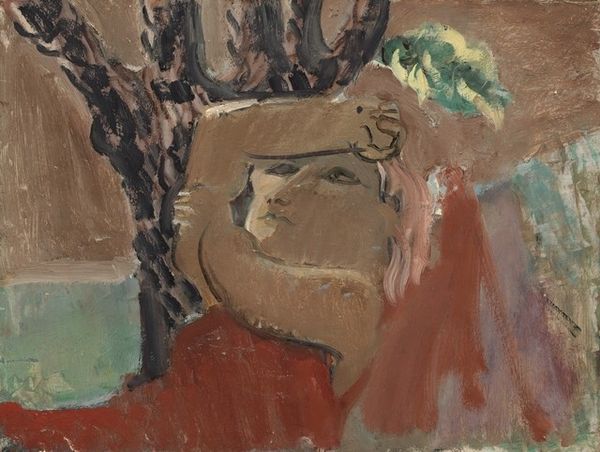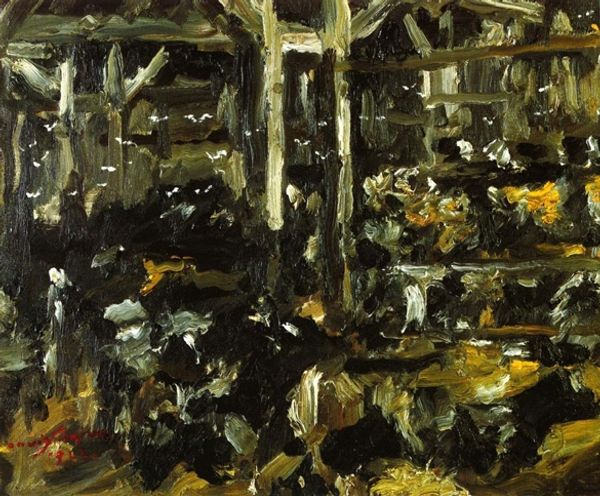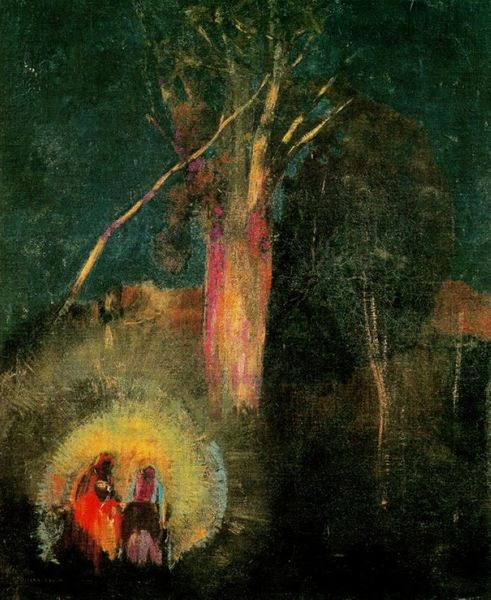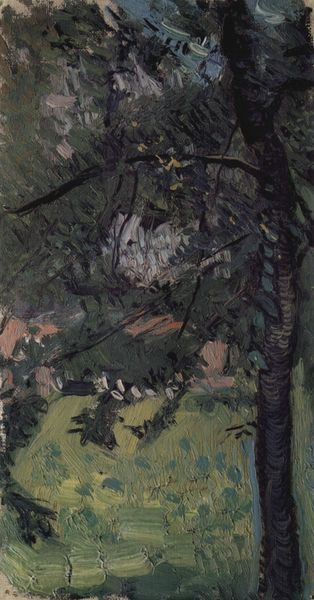
Copyright: Francis Bacon,Fair Use
Editor: Here we have Francis Bacon's "Figures in a Garden," created in 1936, using oil paint. The unsettling imagery and dark palette create a sense of unease for me. How do you interpret this work, considering its historical context? Curator: This painting emerged during a turbulent period. To understand Bacon, we have to examine the anxieties permeating 1930s Europe. Look at the figures; do you see how they seem caged, almost deformed? Bacon was deeply affected by the rise of fascism and the looming threat of war. He captures a sense of societal breakdown. Do you see any indications of hope, of promise, within this composition? Editor: Not really, it’s almost grotesque. I can see the distorted figures now, their features are so unnatural. How was this painting received at the time, considering its subject matter? Curator: Initial responses were mixed. Some were repulsed by what they perceived as a disturbing vision. Others recognized the raw honesty of his work. The Tate acquired this painting much later, showing how artistic and social perceptions can evolve. Bacon challenged conventional notions of beauty and figuration, paving the way for later artists to confront difficult realities in their art. It forced the public to confront uncomfortable truths. Editor: So the initial shock value faded over time, allowing viewers to appreciate its artistic merit and historical significance? Curator: Precisely. Now, it serves as a reminder of a fractured historical moment. Editor: I'll definitely look at Bacon's work differently now, considering the era's anxieties and the politics intertwined within the imagery. Thank you! Curator: My pleasure! Remembering that art reflects the society from which it emerged allows for a much richer viewing experience.
Comments
No comments
Be the first to comment and join the conversation on the ultimate creative platform.
